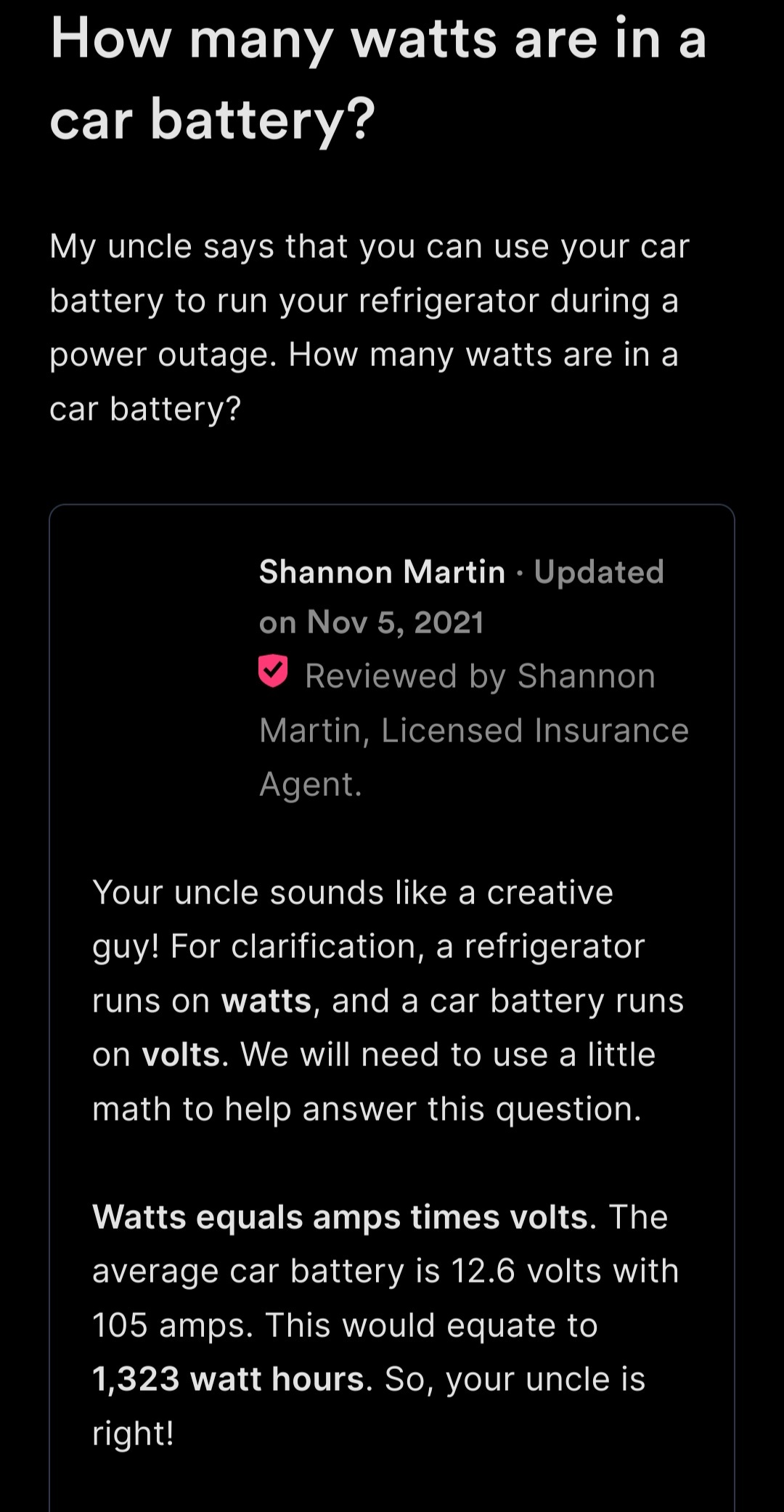this post was submitted on 18 Mar 2024
799 points (96.1% liked)
Technology
59605 readers
3501 users here now
This is a most excellent place for technology news and articles.
Our Rules
- Follow the lemmy.world rules.
- Only tech related content.
- Be excellent to each another!
- Mod approved content bots can post up to 10 articles per day.
- Threads asking for personal tech support may be deleted.
- Politics threads may be removed.
- No memes allowed as posts, OK to post as comments.
- Only approved bots from the list below, to ask if your bot can be added please contact us.
- Check for duplicates before posting, duplicates may be removed
Approved Bots
founded 1 year ago
MODERATORS
you are viewing a single comment's thread
view the rest of the comments
view the rest of the comments

Volts measure voltage?
Electrical potential, IIRC
Another way to think of it is this: Volts are like water pressure (potential energy) Amperage is like the flow rate of water Ohms (resistance) is like how hard it is to push water from high pressure to low pressure Watts are like the volume of water (a unit of energy)
A big hose has low resistance, water can move freely A coffee straw has large resistance, it's hard to pull and push water thru it
A river has very low water pressure, and the speed of the water can vary, so volume of water moving can be huge so the flow rate of water can be huge as well. A pressure washer might have very high pressure, but use as much water as a kitchen faucet. Certain applications need high pressure, some need low pressure. A car battery is like a river, low pressure (typically 12volts) but move a lot of amps (cold cranking amps of up to 500-600 ish usually), and a wall outlet by comparison is like a pressure washer with 120v, 15A (in the US). A fridge won't play nice on 12v, it needs 120v. It might need 400 watts which a car battery can do but it cares about how it can get that by requiring higher potential.
A watt, W=VA, can be thought of as asking how much water is there? 1 minute under a sink verse 1 minute in front a fire hose has two very very different amounts of water.
A watt hour, which most people are familiar with in the US for billing on their utilities, is like asking how many cups of water an hour. A light bulb needs a fraction of a kilowatt hour, a drier needs multiple kilowatt hours, but might only run for 30 minutes.
This idea gets a little tricky and falls apart at its edges but as a general idea should hold up for most peoples understanding of electrical stuff unless you work with it daily like an electrical engineer, electrician or something similar. For sanity sake I'm not going to try to apply this to AC verse DC, I don't have a good analogy for that
Obligatory mobile formatting heads-up and what not and I'm not caffeinated so meh
Ugh, you’re getting into the realm in which technicality is hard to explain.
That’s technically wrong. Even though ampere is coulomb/sec, electrons don’t actually flow.
Like I said it falls apart on its edges but for most people it's probably a better understanding of it than they will ever have or need, but most people scrolling thru Lemmy probably don't need to be understanding electrical concepts like electrons not actually flowing, charge, etc. I'm a controls engineer and while I am aware of the concepts and such, I am not designing electronics so at the end of the day I barely have a use for half of the concepts myself. Sure I could get down to the half semester class of quantum where things get weird, but that won't easily tell people to not to try to plug their fridge into a car battery